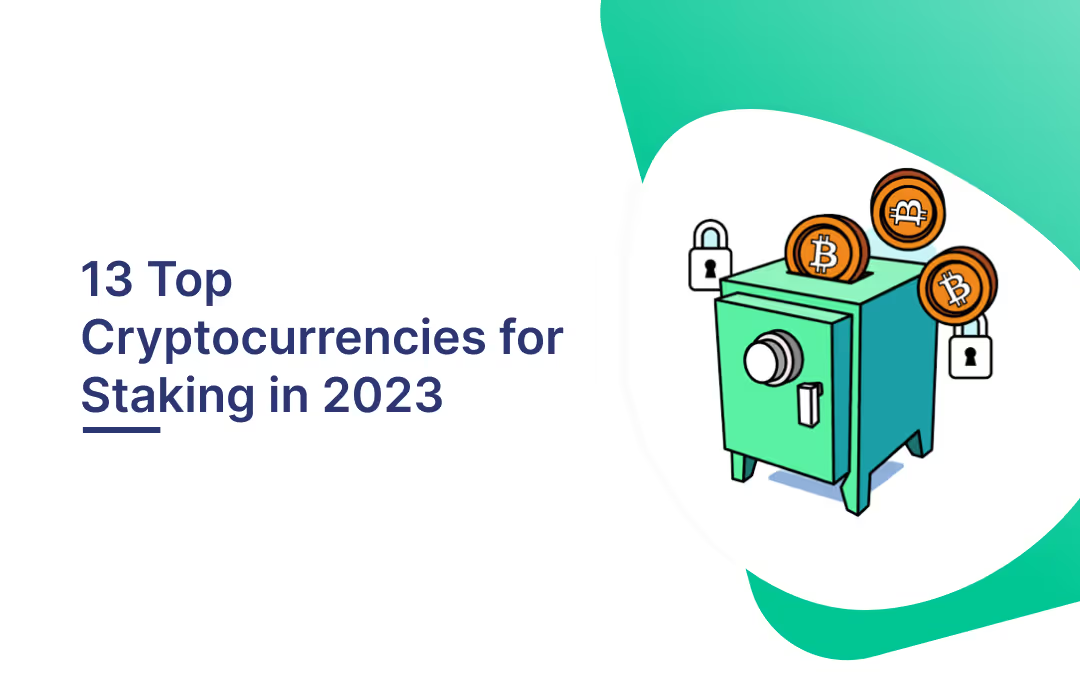
In the ever-evolving landscape of cryptocurrencies, a revolutionary method has emerged that allows investors to earn passive income while actively participating in securing blockchain networks. Welcome to the world of staking, where your idle crypto holdings can transform into lucrative rewards. As we step into 2023, it's time to explore the top cryptocurrencies poised for staking success. From established giants like Ethereum and Cardano to promising newcomers like Polkadot and Avalanche, we will delve into the realms of these digital powerhouses.
How to Choose the Right Cryptocurrency for Staking
When selecting a cryptocurrency for staking, there are several factors to consider. These include:
1. Choice of Cryptocurrency: While Ethereum is popular for staking, exploring alternative Proof-of-Stake (PoS) cryptocurrencies like Cardano, Tezos, and Cosmos can offer higher returns due to fewer active validators in the network.
2. Expected Returns: Evaluate the potential staking rewards based on the total value locked and the network's popularity. Higher participation can result in more evenly distributed rewards among validators.
3. Validator vs. Delegator: Decide whether to become a validator or a delegator. Validators run nodes and participate directly in staking, while delegators trust existing validating nodes to handle their tokens. Validators often earn slightly more by charging fees to delegators.
4. Limitations: Understand any limitations associated with staking, such as minimum deposit requirements or lock-up periods. Utilizing staking platforms can help overcome these limitations, especially if you prefer non-custodial or full-node wallets.
5. Staking Platforms: Explore various staking platforms available in 2023 that simplify the staking process and offer additional benefits, such as liquid staking platforms.
6. Tax Reporting: Ensure the chosen cryptocurrency and staking platform facilitate easy and accurate tax reporting, as staking rewards are generally treated as taxable income in most jurisdictions.
By considering these factors, you can make an informed decision on which cryptocurrency to stake for potentially higher rewards in 2023.
Selecting the Best Crypto for Maximum Staking Rewards in 2023
Some of the best crypto coins to stake in 2023 for profitability include:
- Algorand
- Avalanche
- Cardano
- ChainLink
- Cosmos
- Ecoterra
- Ethereum
- Near Protocol
- Polkadot
- Polygon
- Solana
- Tether
- Tezos
When considering the best cryptocurrencies to stake in 2023 for profitability, it's important to analyze various factors beyond just the return rates and deposit amounts listed in the table. While those numbers provide a quick overview, they don't account for the inflationary or deflationary effects that may impact overall returns. Additionally, different rates and deposit requirements apply to delegators compared to validators. To make an informed decision, let's delve deeper into each cryptocurrency's characteristics and consider their individual dynamics.
Algorand
Algorand, a blockchain platform with a vision to become a prominent payment processor, offers a unique combination of speed, security, and decentralization. By utilizing a proof of stake consensus mechanism, Algorand allows investors to stake their ALGO tokens, contributing to transaction processing and network security while earning ALGO rewards in return.

For those interested in staking ALGO, the process is straightforward. Visit the Algo Governance Portal and connect your preferred wallet, such as Pera, MyAlgo, Defly, or WalletConnect. Once connected, select the option to commit your ALGO tokens, specify the desired amount, and sign the transaction. It's important to note that the sign-up phase for staking on ALGO occurs periodically, so if it's currently closed, you can patiently wait for the next active sign-up phase.
Unlike many other proof of stake mechanisms, ALGO employs a pure proof of stake approach. This means that rewards are predetermined before each three-month active voting period, and the actual payout of rewards takes place at the end of each period.
Alternatively, staking ALGO can also be done through centralized custodial exchanges like Kraken or Binance. While these exchanges offer convenient one-click staking solutions, many investors prefer to stake directly using a non-custodial wallet to retain custody of their ALGO tokens. By staking with a non-custodial wallet, you can potentially earn an estimated 7.2% APR through ALGO governance rewards. In comparison, centralized exchanges typically offer staking rewards ranging from 1% to 6%.
By staking ALGO, investors actively participate in the Algorand network, contributing to its reliability and security while being rewarded with ALGO tokens. This staking process aligns with Algorand's mission to provide a fast, secure, and decentralized blockchain ecosystem. So, whether you choose to stake directly using a non-custodial wallet or opt for a centralized exchange, staking ALGO offers an opportunity to be part of the Algorand community and earn rewards.
Avalanche
Avalanche is a highly scalable and low-fee blockchain platform that offers smart contract capabilities, similar to Ethereum. The native token of the Avalanche network is AVAX, and investors have the opportunity to stake AVAX to earn passive income while supporting the network's security.
When it comes to staking AVAX, there are several options available. One approach is to run an Avalanche node by installing the AvalancheGo node software or utilizing third-party software. This method requires a solid understanding of coding and a minimum of 2000 AVAX, which translates to approximately $34,000 at the current market value.
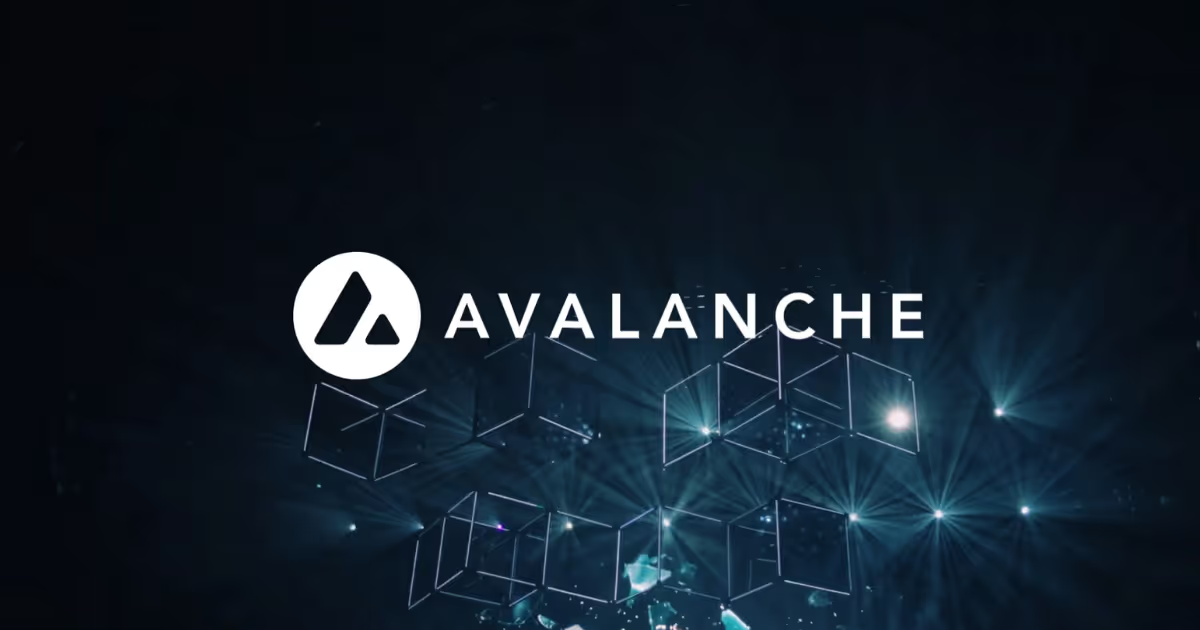
Alternatively, Avalanche simplifies the staking process by allowing users to delegate their AVAX. Using the Avalanche Wallet, you can navigate to the Earn section and select the delegate option. From there, enter the desired amount of AVAX to stake (with a minimum requirement of 25 AVAX), choose a validator, and set the staking period. By doing so, you can start earning staking rewards. To ensure additional security, you can opt for established non-custodial nodes and staking solutions like Stakely as your validator.
Lastly, staking AVAX can also be done through centralized exchanges. Most exchanges offer user-friendly one-click solutions for staking AVAX. However, it's important to note that staking through exchanges typically results in lower rewards, and you do not retain custody of your cryptocurrency.
At present, becoming a validator for AVAX offers an estimated annual percentage rate (APR) of 9.51%. On the other hand, delegating your AVAX yields a slightly lower estimated APR of 8.94%. If you choose to stake through a centralized exchange, the rates typically range from 6% to 10%, depending on the platform.
By staking AVAX, investors actively contribute to the scalability and security of the Avalanche network while earning staking rewards. Whether you decide to run a node, delegate your AVAX, or stake through a centralized exchange, AVAX staking presents an opportunity to participate in the Avalanche ecosystem and generate passive income.
Cardano
Cardano is a top 10 cryptocurrency with a market capitalization of over $13 billion. Staking ADA, the native token of Cardano, allows investors to earn passive income while supporting the security and safety of the Cardano network. There are several ways to stake Cardano:
1. Full Node Wallet: Cardano offers a full node wallet called Daedalus. This wallet stores the complete history of the Cardano blockchain and validates all blocks and transactions, ensuring trustless and autonomous operation. However, using Daedalus requires some technical knowledge and approximately 16GB of RAM. Once you have Daedalus set up, you can easily delegate your ADA by accessing the delegation feature within the wallet.

2. Light Wallet: Yoroi is the most popular Cardano wallet, and it is a light wallet that provides an easy staking option for ADA. Yoroi is available as an extension on Chrome, Firefox, Android, iOS, and Edge. Similar to Daedalus, you can delegate your ADA within Yoroi by selecting the delegation option and choosing a Cardano staking pool.
Both Daedalus and Yoroi are non-custodial wallets, meaning you have full control over your crypto assets and can stake ADA directly, enhancing security and decentralization.
3. Centralized Exchanges: If you prefer a custodial solution, centralized exchanges like Coinbase, Binance, and Kraken also offer Cardano staking services. However, using centralized exchanges means relinquishing control of your crypto assets to the exchange. The best Cardano staking solution for you depends on your preference for custody and potential return on investment (ROI).
At present, staking ADA through non-custodial wallets and delegating your ADA may result in an estimated annual percentage rate (APR) of 4.6%. If you possess the technical knowledge to set up a Cardano stake pool, the potential yield can increase to approximately 22.8% per year. On the other hand, centralized Cardano staking platforms typically offer rewards ranging from 2% to 6%.
It's worth noting that there is no minimum staking deposit for ADA, but a refundable fee of 2 ADA is required for the transaction (which is returned when you unstake your ADA).
Given the ability to stake ADA directly using non-custodial wallets, the majority of Cardano stakers choose this option to retain control over their crypto assets. By staking ADA, investors can actively participate in the Cardano ecosystem, earn passive income, and contribute to the network's security and decentralization.
ChainLink
Chainlink is a prominent decentralized Oracle network that plays a crucial role in connecting blockchains with real-world data. With its extensive range of integrations and partnerships, Chainlink has emerged as one of the top cryptocurrencies for investment. While the Chainlink network itself does not support staking, investors can generate income by depositing their Chainlink tokens into third-party platforms that offer staking services.

Staking Chainlink tokens presents several advantages for investors. Firstly, staking allows individuals to actively participate in the network and contribute to its overall security and decentralization. By staking their tokens, investors support the reliable and accurate transmission of data between blockchains and external sources. This involvement fosters a more robust and trustworthy ecosystem.
Moreover, staking Chainlink can provide investors with a passive income stream. By depositing their tokens into reputable staking platforms, investors can earn rewards or interest on their holdings. These rewards are typically derived from the fees generated by the Oracle services provided by Chainlink, and they provide an additional incentive for individuals to hold and stake their tokens.
Additionally, staking Chainlink tokens can offer investors the opportunity to benefit from potential price appreciation. As Chainlink continues to expand its partnerships and integrations, the demand for its services increases. This increased demand can positively impact the value of the Chainlink token, resulting in potential capital gains for stakers.
While staking is not directly supported within the Chainlink network, there are numerous reputable third-party platforms that facilitate Chainlink staking. These platforms allow investors to securely deposit their tokens and participate in staking pools or similar mechanisms. By leveraging these platforms, investors can access the benefits of staking without the need for technical expertise or running their own nodes.
In summary, Chainlink's unique position as a decentralized Oracle network makes it an attractive investment option. Although staking is not natively supported within the Chainlink network, investors can still generate income by staking their tokens through third-party platforms. By doing so, investors contribute to the network's security, earn passive income, and potentially benefit from the growth of the Chainlink ecosystem.
Cosmos
Cosmos is a blockchain platform that aims to establish a network of interconnected crypto ecosystems through the use of independent parallel blockchains. Its native currency, ATOM, allows investors to participate in staking and earn passive income while supporting the security and integrity of the Cosmos network.
When it comes to staking on Cosmos, there are a few options available. Running a Cosmos node requires technical knowledge and the use of a simapp application. It's important to note that the instructions for setting up a node may change with the upcoming release of a new version of Cosmos SDK. Detailed information can be found in the Cosmos product documentation. Additionally, running a node requires a minimum staking deposit of ATOM, which should be higher than the balance of the 175th active validator in order to be eligible for rewards. Currently, this threshold sits at around 86,000 ATOM, indicating a significant investment requirement. However, it's possible to increase voting power by allowing other ATOM holders to delegate their tokens to your node.

If running a node seems daunting or if you don't meet the minimum staking deposit requirement, delegation is a more accessible option. Delegating ATOM can be done through various non-custodial ATOM wallets like Cosmostation and Keplr. Simply find the delegate option, choose the amount of ATOM you wish to stake, and select a validator. It's important to remember that staking your ATOM locks it up for a certain period, and you won't be able to access it until you unstake.
For those who prefer a more straightforward approach, centralized crypto exchanges offer ATOM staking services. However, it's worth noting that staking on exchanges generally yields lower rewards due to fees, and it involves relinquishing custody of your crypto assets. Nevertheless, using a centralized exchange can be a good starting point for individuals who are less confident in choosing a secure and reliable validator.
As of the time of writing, estimated annual percentage returns for running a validator node on Cosmos range up to 25.2% APR, while delegators can earn an estimated 23.3% APR. On centralized exchanges, staking rewards typically range from 6% to 21% APR. These figures can vary and are subject to change, so it's advisable to check the current rates before proceeding with staking.
In summary, Cosmos provides investors with the opportunity to stake their ATOM tokens and earn passive income while contributing to the security of the network. Whether by running a node, delegating, or using centralized exchanges, individuals have several options to participate in staking and potentially reap the rewards of their investment.
Ecoterra
Ecoterra is an innovative cryptocurrency project that aims to combat climate change while offering exciting staking opportunities. Within just three weeks, the project has already raised an impressive $2 million and is currently in stage 4 of its presale. What makes Ecoterra stand out is its unique Web3 concept called Recycle2Earn, which promotes eco-friendliness.
By participating in Ecoterra's Recycle2Earn program, users can earn rewards for recycling household waste at Reverse Vending Machines (RVMs) available in supermarkets worldwide. The process is simple: users scan the barcode of the item they wish to recycle using the mobile app and deposit it in the RVM. Each recycled item has a specific value, and users are rewarded with ECOTERRA tokens accordingly. What's notable is that Ecoterra is built on the fast and energy-efficient Ethereum network, making it an environmentally friendly choice.

ECOTERRA tokens earned through recycling can be staked, providing users with additional passive income. However, Ecoterra goes beyond recycling rewards. Users can utilize their ECOTERRA tokens to contribute to other green projects, such as tree planting initiatives, ocean clean-ups, or the purchase of Carbon Credits, which help remove CO2 from the atmosphere. Furthermore, users who achieve recycling objectives and milestones can earn additional rewards, including Non-Fungible Tokens (NFTs).
The presale of Ecoterra is progressing rapidly, with five stages remaining. The initial exchange offering (IEO) listing price is set at $0.01, providing potential investors with a potential upside of 60%. Additionally, there is a 5% USDT affiliate program for those interested in participating.
One of the strengths of Ecoterra lies in its team. The project is developed by a doxxed and KYC-verified team, providing transparency and credibility. During the presale, 1 billion tokens (50% of the maximum supply) are available with no vesting period, offering investors the opportunity to secure their tokens early.
For more information, interested individuals can join the Ecoterra Telegram group or refer to the project's comprehensive whitepaper. Ecoterra offers an exciting prospect for crypto enthusiasts who are passionate about making a positive impact on the environment while exploring staking opportunities.
Ethereum
Ethereum, the second-largest cryptocurrency by market capitalization, offers various methods for staking ETH, each with its own advantages and considerations:
1. Solo staking as a validator: Solo staking requires a minimum deposit of 32 ETH, which may be a significant barrier for many investors. Technical knowledge is necessary, and your computer needs to be online continuously. However, some platforms like Rocket Pool allow you to stake with a lower deposit of 16 ETH.

2. Staking as a service (delegating): Delegating is an alternative for investors who prefer not to run their own node. With a minimum deposit of 32 ETH, you can delegate your stake to a service provider. However, you'll need to trust the node operator, as their malicious actions could lead to the loss of your staked ETH. Additionally, there may be a small monthly fee deducted from your protocol rewards for node operations.
3. Pooled staking: Pooled staking is a popular choice due to its lower entry barrier. You can start staking with as little as 0.01 ETH and earn rewards. Pooled staking protocols like Lido or Rocket Pool often offer the advantage of maintaining liquidity by providing ERC-20 tokens (e.g., stETH) representing your staked ETH, which can be freely used and invested.
4. Centralized staking: Centralized staking providers such as Binance, Kraken, and Coinbase offer a convenient and beginner-friendly option for staking ETH. With just one click, you can stake your ETH. However, there are fees associated with centralized staking, and you need to consider the custody of your ETH being in the hands of the exchange. Centralized staking providers also create a potential point of failure for the Ethereum network, which the Ethereum developers criticize.
In terms of estimated annual percentage rate (APR), validators earn around 2.48%, while those staking as a service earn around 2.25%. Pooled staking protocols like Lido or Rocket Pool offer higher APRs, ranging from 4.04% to 7.09%. Centralized exchanges typically claim an APY of around 4%. It's important to note that the figures mentioned for validators and delegators are APR, which does not account for compound interest, while APY does. Additionally, these figures may be higher when adjusted to reflect the inflation of the network supply.
When deciding how to stake ETH, there is no definitive right or wrong answer. The best approach depends on your circumstances, including the amount of ETH you have available and your technical knowledge. Consider your preferences and evaluate the trade-offs before choosing the staking method that suits you best.
Near Protocol
NEAR Protocol is a blockchain platform designed for decentralized applications (dApps) and smart contracts, with a focus on creating the future of Web3 through sharding technology. The native token of the NEAR network is NEAR, and users can stake NEAR to help secure the network and earn rewards.
When it comes to staking NEAR, there are three main options to consider:
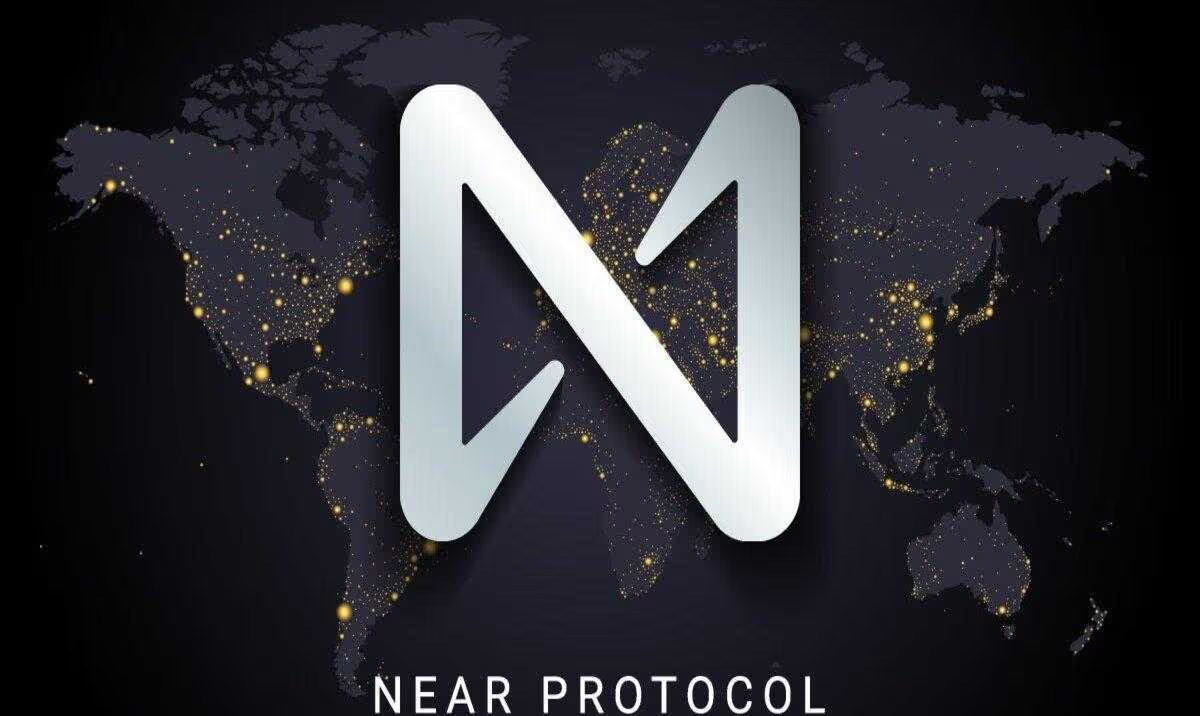
1. Run a validator: Running a validator node requires a significant amount of technical expertise. You'll need to install Docker and use nearup, which involves a solid understanding of inline coding. Additionally, you'll need to meet the minimum NEAR staking deposit requirement, which is currently set at the current seat price. As of now, the seat price stands at 25,205 NEAR, equivalent to approximately $48,645.
2. Delegate NEAR: Delegating NEAR tokens is a popular choice among many investors. Instead of running your own node, you can delegate your tokens to existing validators. This option provides a more accessible way to participate in staking without the need for extensive technical knowledge. To delegate, simply navigate to the staking tab and select your preferred staking pool.
3. Use a centralized crypto exchange: Another option is to stake NEAR through centralized crypto exchanges like Binance. However, it's important to note that by choosing this route, you relinquish custody of your cryptocurrency to the exchange. While it offers convenience, there are associated risks to consider.
At the time of writing, running a validator node could yield an estimated 9.9% annual percentage rate (APR). Delegating NEAR tokens, on the other hand, may earn around 9.2% APR. Centralized staking providers offer higher potential rewards, with an estimated APR of up to 11.9%.
It's crucial to conduct thorough research and evaluate your own circumstances before deciding on the best approach to stake NEAR. Consider factors such as technical proficiency, staking requirements, and the level of control you want over your tokens.
Polkadot
Polkadot is a prominent cryptocurrency that cannot be mined due to its Proof of Stake (PoS) consensus mechanism. It is a popular staking option and currently holds a position in the top 20 cryptocurrencies, boasting a market capitalization exceeding $7 billion and significant daily trading volume. Developed by the former CTO of Ethereum, Polkadot is a multi-chain network and layer 0 protocol aimed at addressing scalability and interoperability challenges faced by the Ethereum network. Consequently, staking DOT has become an attractive investment opportunity in 2023, and there are multiple avenues available to do so.

To stake Polkadot, you have several options:
1. Running a validator: Running a validator node requires technical expertise and the use of a Linux-based cloud server. Additionally, you must meet the minimum staking deposit requirement, which varies dynamically based on the amount of stake behind each active validator. To earn staking rewards, your stake must exceed that of the lowest-ranked validator in the active set. As of now, this threshold stands at approximately 350 DOT.
2. Opening a nomination pool: For individuals who wish to have less responsibility or lack the necessary hardware requirements, opening a nomination pool is an alternative. This option serves as a middle ground between delegating DOT to a nomination pool and running a validator.
3. Nominating directly: Another option is to nominate directly, which involves selecting specific validators to support. This approach also provides a balance between delegation and running a validator.
4. Joining a nomination pool (delegating): If you lack technical expertise, delegating your DOT to a nomination pool is a suitable choice. You can achieve this using non-custodial wallets like Ledger (via Ledger Live) or Fearless Wallet. Simply select the stake option and choose a validator.
5. Using a custodial exchange: Custodial exchanges such as Kraken and Coinbase offer the convenience of staking DOT with a single click. However, keep in mind that using these solutions means relinquishing custody of your cryptocurrency.
As of now, running a validator for Polkadot could yield an estimated annual percentage rate (APR) of 15.31%, while delegating DOT may result in an estimated APR of 14.34%. Custodial staking providers typically offer APR ranging from 7% to 14%.
When deciding on the best approach to stake Polkadot, it is important to consider your technical capabilities, hardware requirements, and preferences regarding custody of your crypto assets. Conduct thorough research and evaluate your circumstances to make an informed decision.
Polygon
Polygon is a layer two blockchain solution designed to scale the Ethereum network, enabling faster transactions and lower fees. The native currency of the Polygon network is MATIC, and investors have the opportunity to stake MATIC and earn rewards while contributing to the security of the network.
To stake MATIC, you have several options:
1. Running a node: Running a node on the Polygon network requires a considerable amount of technical expertise. You can refer to the product documentation for detailed steps on setting up and deploying a node. Additionally, there is a minimum staking deposit requirement for MATIC. The specific amount is dynamic, but it needs to exceed the balance of the 100th validator in order to join the active set of validators on Polygon.
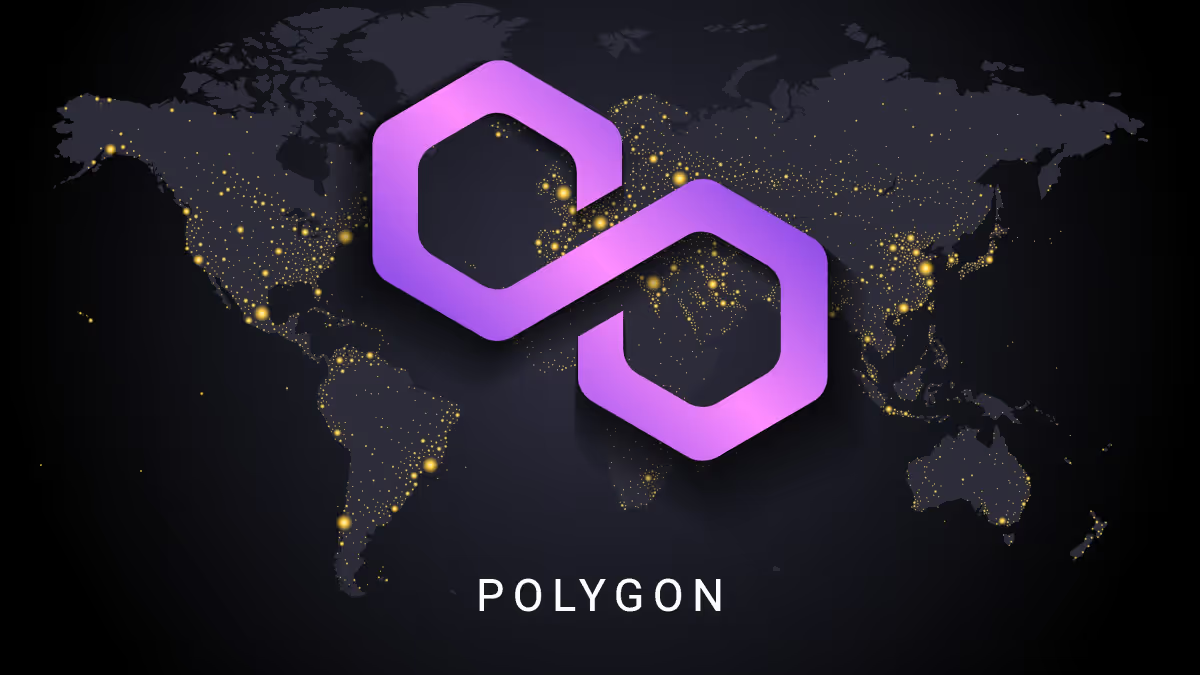
2. Delegating MATIC: If you prefer to avoid the technical aspects, you can delegate your MATIC using a non-custodial wallet. Visit the Polygon Staking platform, select the delegate option, choose a validator, and specify the amount you wish to delegate.
3. Non-custodial wallet staking: Another option for simpler staking while retaining custody of your tokens is to use a non-custodial wallet like Lido. By staking your MATIC with Lido, you not only earn rewards but also receive stMATIC tokens in return. These tokens can be utilized in various other decentralized finance (DeFi) protocols to compound your yield.
4. Centralized exchanges: Centralized exchanges such as Binance or Kraken also provide the option to stake MATIC. These exchanges offer a user-friendly experience, particularly for beginners, but it's important to note that you will not retain custody of your cryptocurrency when it is held on an exchange. This entails certain inherent risks.
At present, running a validator on Polygon can potentially yield an estimated annual percentage rate (APR) of 7.91%, while delegating MATIC may result in a slightly lower estimated APR of 7.35%. Decentralized protocols offer an estimated APR of 4.2%, whereas centralized exchanges typically offer APR ranging from 2% to 6%.
When choosing the best approach to stake MATIC, consider your technical proficiency, preference for custody, and desired level of complexity. It's essential to conduct thorough research and evaluate your individual circumstances before making an informed decision.
Solana
Solana, a prominent cryptocurrency ranked in the top 10 with a market cap exceeding $7 billion, is highly regarded for staking in 2023. There are several avenues for staking Solana, each offering distinct advantages.

To begin, running a node on the Solana blockchain requires considerable technical expertise. You must connect to a Solana cluster, and detailed instructions can be found in the Solana product documentation. While there is no minimum staking deposit to become a validator, you need a voting account and must pay a small fee for each block you validate, potentially amounting to 1.1 SOL per day. Hardware requirements include a processor with a speed of 2.8GHz or faster and at least 128GB of RAM.
Given the technical knowledge and hardware demands, many investors choose to delegate their Solana holdings. Delegation is a straightforward process using non-custodial wallets such as Phantom or Ledger (Live). Simply select a validator to stake with, specify the amount to stake, and confirm the delegation. It's important to research and choose a trustworthy validator, and platforms like validators.app or StakeView.app can assist in finding reliable options.
Alternatively, you can stake Solana through decentralized liquid staking protocols like Lido or centralized platforms like Coinbase Earn. Decentralized protocols like Lido provide the advantage of maintaining liquidity by issuing stSOL tokens representing the staked Solana, which can be freely traded. As of now, running a validator on Solana offers an estimated 7.38% annual percentage yield (APY), while delegating through non-custodial wallets yields around 6.43% APY. Decentralized liquid staking protocols like Lido provide an estimated 6.7% APY, accompanied by the liquidity benefit. Centralized exchanges offer staking rewards ranging from 2.4% to 7%.
Investors should conduct thorough research and consider their specific requirements before selecting the most suitable staking method for Solana.
Tether
Tether (USDT) stands out as one of the most attractive options for staking due to its stable nature. Being pegged to the US dollar, Tether offers investors the assurance that its price will consistently remain around $1. Although there are no absolute guarantees, Tether's stability has made it a popular choice among crypto enthusiasts. With a market capitalization of nearly $82 billion, Tether currently holds the third-largest market cap in the entire cryptocurrency market, following Bitcoin and Ethereum.
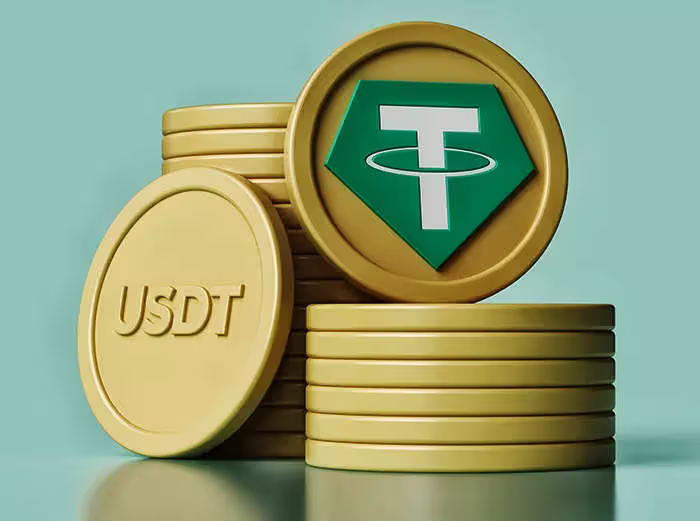
In 2023, Tether has experienced remarkable growth, with its market cap approaching an all-time high. It has witnessed a substantial increase of approximately 22.8%, equivalent to around $15 billion. This surge can be attributed to ongoing banking crises and the challenges faced by other stablecoins. Notably, the brief de-peg of Circle's USDC and regulatory pressures surrounding Binance resulted in the decline of BUSD, further strengthening Tether's position. As a result, USDT now dominates over 60% of the stablecoin market.
While Tether's stability makes it an appealing choice for staking, it's essential to remain informed about any potential risks or developments in the stablecoin market. Despite its current success, the landscape of stablecoins can be unpredictable, as exemplified by the defunct Terra USD. Investors should conduct thorough research and stay updated on market dynamics when considering Tether or any other stablecoin for staking purposes.
Tezos
Tezos (XTZ), a top 50 cryptocurrency with a market capitalization of over $1 billion, continues to be a favored choice for staking. There are several ways to stake Tezos and earn rewards:
1. Delegating: You can delegate your XTZ holdings to a baker (validator) to earn staking rewards. Delegating allows you to avoid the technical complexities of running a node and becoming a baker yourself. By delegating, you lend your coins to a baker, increasing their chances of being selected to validate and earn rewards. You can easily delegate Tezos using non-custodial wallets such as Ledger (using Ledger Live) and Exodus. Delegating does not involve transferring your XTZ to the baker, and your coins remain in your wallet while loaning out your voting rights. Bakers typically take a small percentage of the staking rewards as compensation for their services.
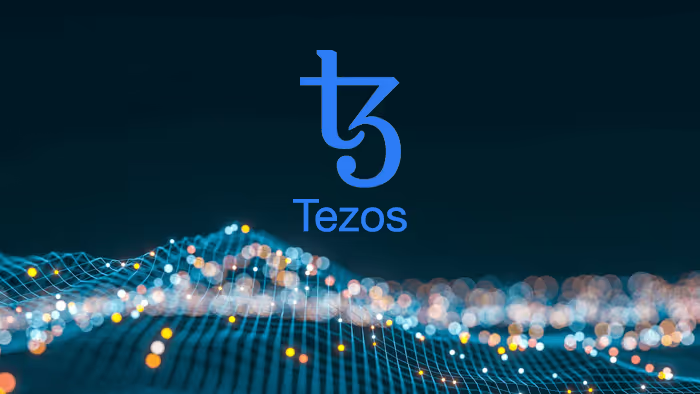
2. Running a node (Baking): Running a node in the Tezos ecosystem is referred to as baking. As a baker, you sign and publish blocks on the Tezos blockchain, ensuring the accuracy of transactions within those blocks. To become a baker, you need a "roll" of Tezos, which currently amounts to 6,000 XTZ. Setting up a baking node requires technical knowledge and the installation of tools like Kiln. However, the minimum staking deposit and technical expertise can be deterrents for many investors.
3. Centralized staking platforms: You can also stake Tezos on centralized cryptocurrency exchanges like Coinbase or Kraken. While this option offers convenience, it comes with the trade-off of relinquishing custody of your crypto assets. The staking rewards on centralized exchanges vary between 3% to 7%, depending on the platform.
By baking Tezos (running a node), you can earn an estimated annual percentage rate (APR) of 5.89%. Delegating your Tezos to a baker using a non-custodial wallet can yield an estimated APR of 5.31%. It's important to note that these figures are subject to change and may vary depending on the specific baker or exchange. Engaging in thorough research and staying updated on staking options and rewards is crucial for maximizing returns while staking Tezos.
FAQs
1. What’s the difference between validators and delegators in staking?
Validators and delegators play different roles in staking:
Delegator: A delegator is a token holder who wants to participate in staking but chooses to delegate their tokens to an existing validating node. Delegators do not run their own nodes but trust the validating node to handle their staking process. Delegating is a simpler and more user-friendly option for individuals who do not have the technical expertise or resources to run a node.
Validator: A validator is responsible for running a node and participating directly in the staking process. Validators need to meet certain requirements, such as holding a minimum amount of tokens and maintaining a reliable and secure node infrastructure. Validators have a higher level of responsibility but also have the potential to earn additional rewards by accepting delegations from other token holders.
The main difference is that validators actively run nodes and participate in staking, while delegators choose to delegate their tokens to validators and rely on their expertise to earn staking rewards.
2. What’s the difference between APR and APY?
APR stands for Annual Percentage Rate, which represents the interest or rewards earned on an investment in a year. It does not take compounding into account.
On the other hand, APY stands for Annual Percentage Yield. It considers the effect of compounding on the investment by calculating the annual rate of return, including the reinvestment of rewards or interest earned. APY provides a more accurate representation of the overall growth or return on investment.
In summary, APR only considers simple interest or rewards, while APY factors in the compounding effect on the investment.
3. What’s the difference between reward and adjusted reward?
Reward refers to the percentage or amount of staking rewards earned by stakers within a given year, usually represented as APR. It indicates the potential return on staked tokens.
Adjusted reward, on the other hand, takes into account the annual dilution of a cryptocurrency. It considers the growth in the token supply, which can affect the value of rewards earned. Adjusted rewards reflect the impact of token supply inflation on the overall value of staking rewards.
4. Which coins have the highest ROI staking?
The highest ROI staking coins can vary based on market conditions. Currently, according to our table, DOT and ATOM have the highest estimated APR. However, ROI is subject to change due to market fluctuations and the value of tokens.
5. What coin is best for staking?
Determining the best coin to stake depends on individual factors such as risk tolerance, portfolio diversification, and market conditions. Some investors prefer established coins like ETH, while others may seek higher ROI from less popular coins. It's important to conduct thorough research and consider the risks associated with staking before making a decision.
| Step | Form | Purpose | Action |
|---|---|---|---|
| 1 | 1099-DA | Reports digital asset sales or exchanges | Use to fill out Form 8949. |
| 2 | Form 1099-MISC | Reports miscellaneous crypto income | Use to fill out Schedule 1 or C. |
| 3 | Form 8949 | Details individual transactions | List each transaction here. |
| 4 | Schedule D | Summarizes capital gains/losses | Transfer totals from Form 8949. |
| 5 | Schedule 1 | Reports miscellaneous income | Include miscellaneous income (if not self-employment). |
| 6 | Schedule C | Reports self-employment income | Include self-employment income and expenses. |
| 7 | Form W-2 | Reports wages (if paid in Bitcoin) | Include wages in total income. |
| 8 | Form 1040 | Primary tax return | Summarize all income, deductions, and tax owed. |
| Date | Event/Requirement |
|---|---|
| January 1, 2025 | Brokers begin tracking and reporting digital asset transactions. |
| February 2026 | Brokers issue Form 1099-DA for the 2025 tax year to taxpayers. |
| April 15, 2026 | Deadline for taxpayers to file their 2025 tax returns with IRS data. |
| Timeline Event | Description |
|---|---|
| Before January 1, 2025 | Taxpayers must identify wallets and accounts containing digital assets and document unused basis. |
| January 1, 2025 | Snapshot date for confirming remaining digital assets in wallets and accounts. |
| March 2025 | Brokers begin issuing Form 1099-DA, reflecting a wallet-specific basis. |
| Before Filing 2025 Tax Returns | Taxpayers must finalize their Safe Harbor Allocation to ensure compliance and avoid penalties. |
| Feature | Use Case Scenario | Technical Details |
|---|---|---|
| Automated Monitoring of Transactions | Alice uses staking on Ethereum 2.0 and yield farming on Uniswap. Kryptos automates tracking of her staking rewards and LP tokens across platforms. | Integrates with Ethereum and Uniswap APIs for real-time tracking and monitoring of transactions. |
| Comprehensive Data Collection | Bob switches between liquidity pools and staking protocols. Kryptos aggregates all transactions, including historical data. | Pulls and consolidates data from multiple sources and supports historical data imports. |
| Advanced Tax Categorization | Carol earns from staking Polkadot and yield farming on Aave. Kryptos categorizes her rewards as ordinary income and investment income. | Uses jurisdiction-specific rules to categorize rewards and guarantee compliance with local tax regulations. |
| Dynamic FMV Calculation | Dave redeems LP tokens for Ethereum and stablecoins. Kryptos calculates the fair market value (FMV) at redemption and during sales. | Updates FMV based on market data and accurately calculates capital gains for transactions. |
| Handling Complex DeFi Transactions | Eve engages in multi-step DeFi transactions. Kryptos tracks value changes and tax implications throughout these processes. | Manages multi-step transactions, including swaps and staking, for comprehensive tax reporting. |
| Real-Time Alerts and Updates | Frank receives alerts on contemporary tax regulations affecting DeFi. Kryptos keeps him updated on relevant changes in tax laws. | Observe regulatory updates and provide real-time alerts about changes in tax regulations. |
| Seamless Tax Reporting Integration | Grace files taxes using TurboTax. Kryptos integrates with TurboTax to import staking and yield farming data easily. | Direct integration with tax software like TurboTax for smooth data import and multi-jurisdictional reporting. |
| Investor Type | Impact of Crypto Tax Updates 2025 |
|---|---|
| Retail Investors | Standardized crypto reporting regulations make tax filing easier, but increased IRS visibility raises the risk of audits. |
| Traders & HFT Users | To ensure crypto tax compliance, the IRS is increasing its scrutiny and requiring precise cost-basis calculations across several exchanges. |
| Defi & Staking Participants | The regulations for reporting crypto transactions for staking rewards, lending, and governance tokens are unclear, and there is a lack of standardization for decentralized platforms. |
| NFT Creators & Buyers | Confusion over crypto capital gains tax in 2025, including the taxation of NFT flips, royalties, and transactions across several blockchains. |
| Crypto Payments & Businesses | Merchants who take Bitcoin, USDC, and other digital assets must track crypto capital gains for each transaction, which increases crypto tax compliance requirements. |
| Event | Consequences | Penalties |
|---|---|---|
| Reporting Failure | The tax authorities can mark uncontrolled revenues and further investigate. | Penalty fines, interest on unpaid taxes and potential fraud fees if they are deliberately occurring. |
| Misreporting CGT | Misreporting CGT Error reporting profits or losses can trigger the IRS audit. | 20% fine on under -ported zodiac signs, as well as tax and interest. |
| Using decentralized exchanges (DEXs) or mixers without records | The IRS can track anonymous transactions and demand documentation. | Possible tax evasion fee and significant fine. |
| Disregarding Bitcoin mining tax liabilities | Mining reward is considered taxable income, and failure of the report can be regarded as tax fraud. | Further tax obligations, punishment and potential legal steps. |
| Foreign crypto holdings: Non-disclosure | Foreign-accepted crypto FATCA may be subject to reporting rules. | Heavy fines (up to $ 10,000 per fracture) or prosecution for intentional non-transport. |



